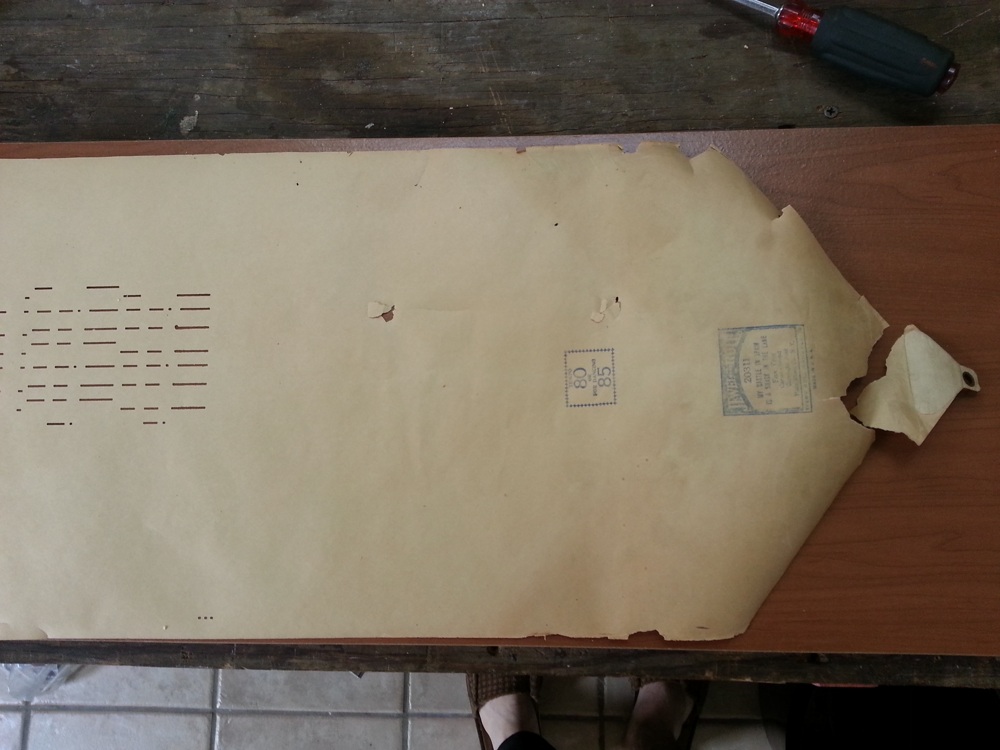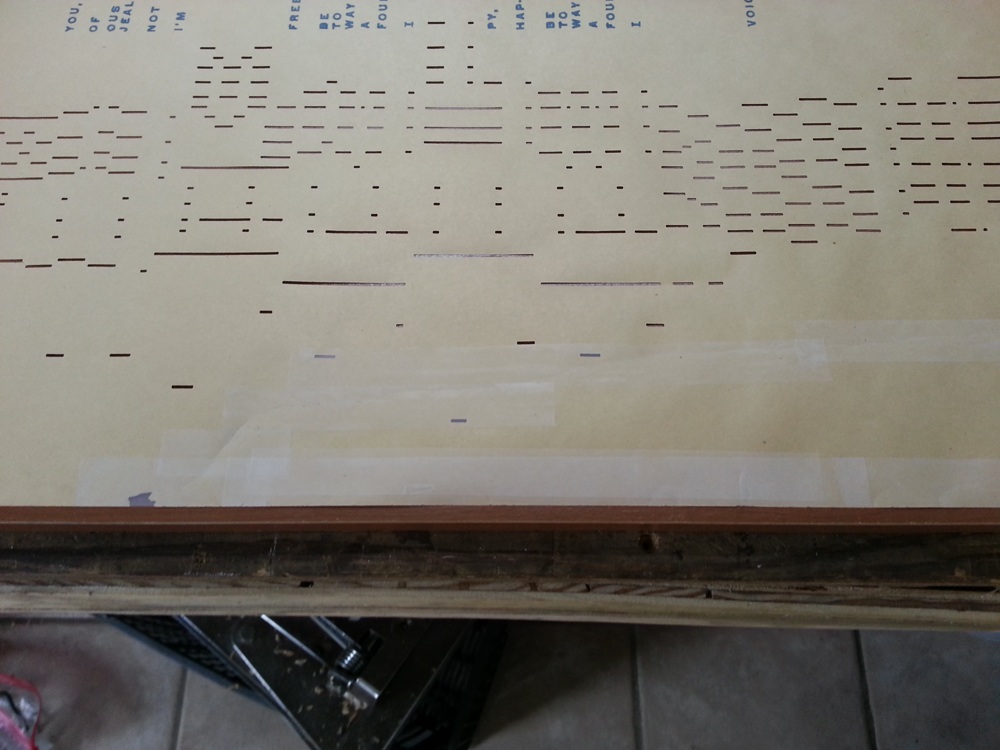This post is a continuation of the Milton Player Piano Series.
While not technically part of a player piano, the music roll is still a vital component of the operation of the player mechanism, and if there are problems with the music roll, there will be problems with the performance of the piano. These rolls are very delicate and can be heavily damaged in the blink of an eye by a player piano that is no longer functioning optimally. Fortunately, they can be repaired quite easily.
The music roll attaches on the left side. The bolt at the top is tightened slightly to hold the roll in place.
For this job, you want to use the highest quality tape that you can. Archival or book repair tape is good. Otherwise, Scotch Magic tape will work in a pinch. The most important tool for this job is the roll-repair jig. This is basically a flat board about 3 feet long with two pins or bolts on one end to hold a music roll, and a wooden rod on the other end to act as a take-up spool. Both ends should be suspended an inch or two above the board to allow the rolls to spin.
The music roll in place.
The take-up spool.
Once the jig is built, load up a damaged music roll, pull the tab across and hook it onto the take-up spool. The roll can now be slowly pulled across the board, repairs made where necessary, and the roll rewound by hand. I place a couple of rulers on top to hold the paper against the board in the middle.
The music roll attached to the take-up spool.
When repairing a tear in the roll, first unfold any bits of paper that have become folded under or creased. Usually all of the paper is still there and attached. Sometimes there will be tiny tears and folds that are hard to straighten out with your fingers. Keep a small screwdriver or awl handy to straighten these out. Once the paper is straightened and in place, carefully tape over the tears. I always place my tape along the length of the paper, never across the paper. I do it this way because during play, the paper is placed under tension along its length and placing the tape this way serves to strengthen the paper moreso than taping across the paper. If there are pieces of paper missing that you have taped over, place tape on the underside as well. This will prevent the exposed sticky side of the tape from contacting the paper underneath when it is rolled up.
For tape that is placed along the edge of the roll, make sure that the tape is flush with the edge of the paper. If the tape hangs over the edge a bit, trim it flush with a ruler and a razor blade.
The tape has covered up some of the note-playing holes.
If any of the note-playing holes have been covered by tape, carefully cut them out with a razor blade or pen knife.
Note-holes cut out.
Before loading the roll up and testing it, make sure your player piano is properly adjusted and wont just tear it again.






















I have been servicing and tuning pianos in NOLA since 2012 after first becoming interested in piano technology in 2009. With a background in teaching bicycle mechanics, I bring a methodical mindset and a love of sharing knowledge and skills to the rich musical culture of New Orleans.